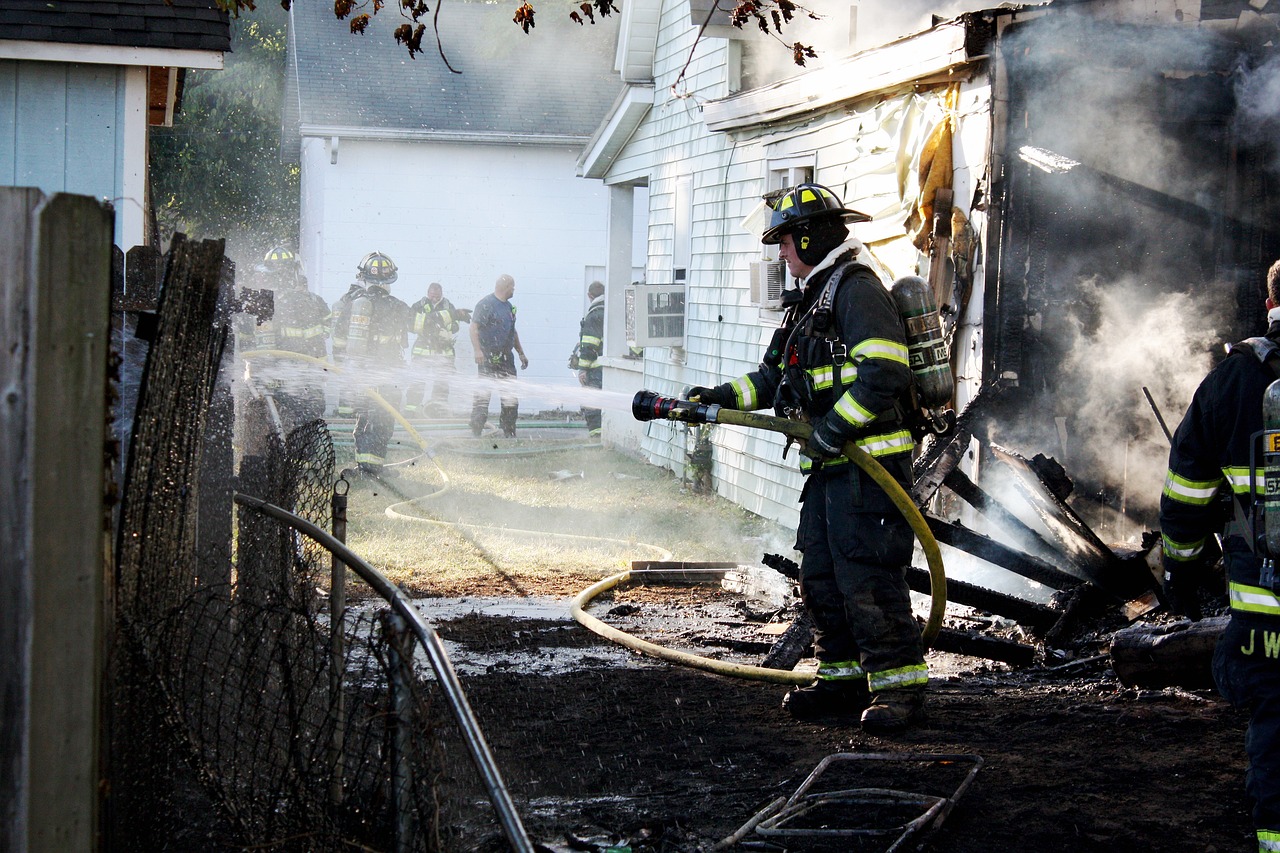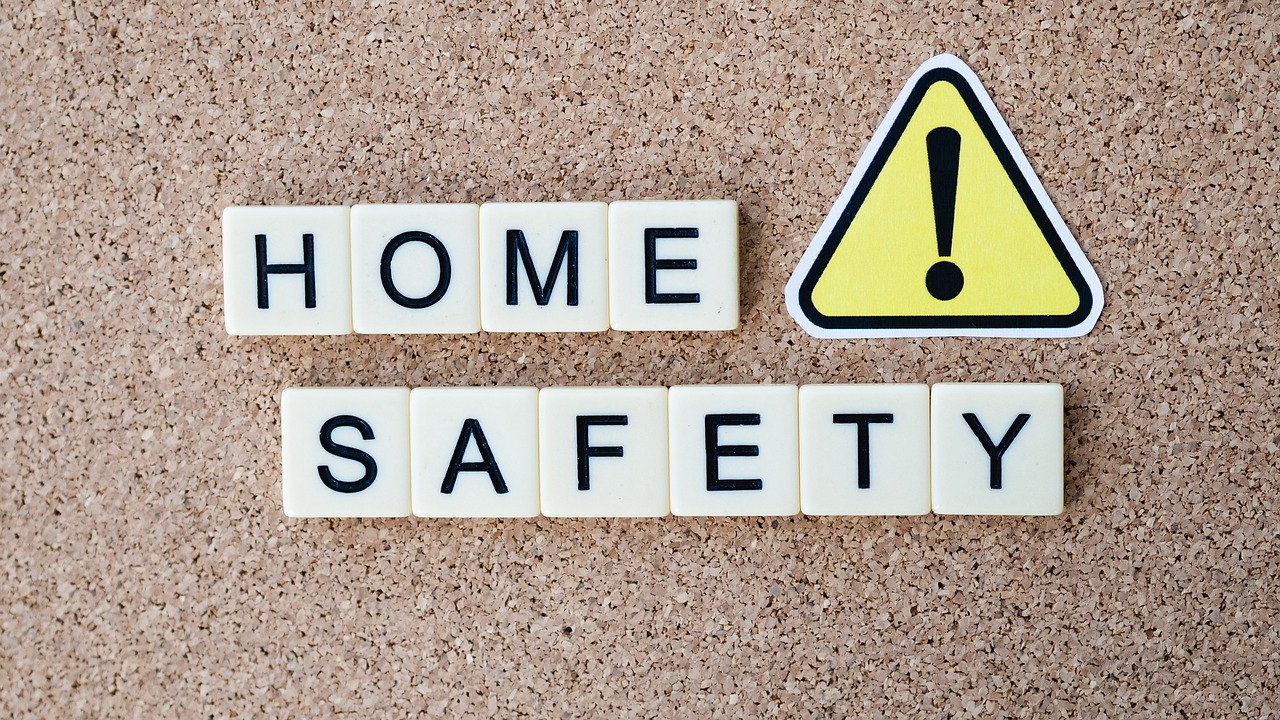Unlocking the Nexus between Human Behavior and Safety Measures
In today's world, the intersection of human behavior and safety measures is more crucial than ever. With the increasing complexity of our environments—be it in workplaces, public spaces, or even at home—understanding how individuals act and react in relation to safety protocols can significantly enhance our ability to prevent accidents and reduce risks. Have you ever wondered why some people seem to disregard safety rules while others adhere to them religiously? This article delves into the intricate relationship between our actions and the safety measures designed to protect us, shedding light on how we can create a more secure environment for everyone.
To truly grasp the connection between human behavior and safety measures, we must first explore the psychological factors that influence our compliance with safety protocols. Motivation plays a pivotal role; when individuals understand the consequences of their actions—such as the potential for injury or harm—they are more likely to follow safety guidelines. Additionally, perception is key; if a person believes that a safety measure is effective, they are more inclined to comply. Social norms also come into play; when safety compliance is viewed as a collective responsibility among peers, individuals are more likely to adhere to protocols. It's fascinating to consider how these psychological elements intertwine to shape our behaviors, isn’t it?
Behavioral safety programs are designed to address the human element of safety compliance. These programs aim to change workplace behaviors by focusing on the actions of individuals rather than solely on the safety rules themselves. The objectives of such programs include reducing accidents, enhancing safety culture, and promoting proactive behaviors among employees. The methodologies employed often involve observation, feedback, and continuous improvement. By understanding and influencing behavior, organizations can create a safer environment that not only protects employees but also fosters a culture of safety.
Successful behavioral safety programs are built on several key components. These include:
- Observation Techniques: Regularly observing employee behaviors in relation to safety protocols helps identify areas for improvement.
- Feedback Mechanisms: Providing constructive feedback encourages individuals to reflect on their actions and make necessary adjustments.
- Employee Involvement: Engaging employees in safety initiatives fosters a sense of ownership and responsibility towards safety.
These elements work together to create a robust framework that not only highlights the importance of safety but also actively engages individuals in the process of compliance.
One of the most effective ways to influence behavior is through training and education. By educating employees about safety practices, organizations can empower them to make informed decisions that prioritize their safety and the safety of others. Training sessions should be interactive and relatable, allowing employees to engage with the material actively. Think of it as equipping them with tools for a toolbox; the more tools they have, the better prepared they are to tackle safety challenges.
Continuous monitoring and evaluation of safety programs are essential to ensure their effectiveness. Organizations must regularly assess their safety initiatives to identify strengths and areas for improvement. This could involve analyzing incident reports, conducting employee surveys, or reviewing compliance rates. By maintaining a cycle of feedback and improvement, organizations can adapt their strategies to meet the evolving needs of their workforce and the environment.
Real-world examples can provide invaluable insights into the effectiveness of behavioral safety strategies. For instance, consider a manufacturing company that implemented a behavioral safety program focusing on peer observations. Employees were encouraged to observe each other’s safety practices and provide feedback. Over time, this led to a significant reduction in workplace accidents and a notable improvement in the overall safety culture. Such case studies highlight the tangible benefits of understanding and addressing the human factors in safety compliance.
Leadership plays a critical role in shaping an organization’s safety culture. When management demonstrates a commitment to safety, it sets a powerful example for employees to follow. Effective communication from leadership regarding safety expectations fosters an environment where employees feel valued and responsible for their own safety and that of their colleagues. It’s akin to a captain steering a ship; if the captain is focused on navigating safely, the crew is more likely to follow suit.
Different leadership styles can have varying impacts on fostering a culture of safety. For example, transformational leaders who inspire and motivate their teams often see higher levels of safety compliance. In contrast, authoritarian styles may create an environment of fear, leading to resistance rather than adherence to safety protocols. Understanding the nuances of leadership can help organizations cultivate a more effective safety culture.
Engaging employees in safety initiatives is vital for creating a culture of safety. Strategies such as collaborative safety committees, open forums for discussion, and recognition programs for safe behaviors can enhance employee involvement. When employees feel they have a voice in safety matters, they are more likely to take ownership of their actions and contribute to a safer workplace.
Q1: What is the primary goal of behavioral safety programs?
A1: The primary goal of behavioral safety programs is to reduce workplace accidents by changing individual behaviors and promoting a culture of safety.
Q2: How can leadership influence safety culture?
A2: Leadership influences safety culture by setting a positive example, communicating safety expectations clearly, and engaging employees in safety initiatives.
Q3: Why is training important in safety compliance?
A3: Training is important because it equips employees with the knowledge and skills needed to follow safety protocols effectively, ultimately reducing the risk of accidents.

The Psychology of Safety Compliance
Understanding the psychology of safety compliance is like peeling back the layers of an onion; each layer reveals more about why people behave the way they do regarding safety protocols. At the core, human behavior is influenced by a myriad of psychological factors, including motivation, perception, and the ever-powerful force of social norms. These elements play a crucial role in determining whether individuals choose to adhere to safety measures or disregard them.
Let's start with motivation. Why do people comply with safety protocols? It often boils down to incentives. When employees feel that their safety is prioritized, they are more likely to engage in safe practices. This can be driven by personal experiences, such as a near-miss incident that left a lasting impression, or by external factors like company policies that reward safe behavior. Consider this: if a worker knows that following safety protocols can lead to recognition or bonuses, they are more likely to take those protocols seriously. Motivation can be intrinsic, where individuals feel a personal responsibility to keep themselves and their colleagues safe, or extrinsic, where external rewards encourage compliance.
Next, let’s talk about perception. How individuals perceive risks can significantly impact their behavior. For instance, if a worker believes that a task is low-risk, they might skip safety measures, thinking, "It won’t happen to me." This optimism bias can be dangerous. To combat this, organizations can implement training programs that reshape employees' perceptions of risk. By providing real-life examples and data, companies can help employees understand the potential consequences of unsafe behaviors, making them more likely to comply with safety measures.
Social norms also play a pivotal role in shaping safety behaviors. Humans are social creatures, and we often look to our peers to gauge what is acceptable. If a workplace culture promotes safety as a shared value, individuals are more likely to follow suit. On the other hand, if they observe colleagues disregarding safety protocols, they may feel pressured to do the same. This is where leadership and management come into play; by fostering a culture that emphasizes safety, leaders can influence employee behavior positively.
In summary, the psychology of safety compliance is a complex interplay of motivation, perception, and social norms. By understanding these psychological factors, organizations can tailor their safety programs to not only meet compliance standards but also create a culture where safety is ingrained in the daily routines of every employee. This approach not only enhances safety but also contributes to a more engaged and productive workforce.
- What are the main factors influencing safety compliance? The main factors include motivation, perception of risk, and social norms.
- How can organizations improve safety compliance? Organizations can improve safety compliance through effective training, creating a supportive culture, and implementing incentive programs.
- Why is understanding psychology important for safety measures? Understanding psychology helps organizations tailor their safety protocols to be more effective, as it addresses the root causes of non-compliance.

Behavioral Safety Programs
Behavioral safety programs are essential tools designed to create and maintain a culture of safety within organizations. These programs focus on understanding and influencing the behaviors of employees, recognizing that human actions play a significant role in workplace safety. By addressing the psychological and social factors that drive behavior, organizations can foster an environment where safety is prioritized and ingrained in daily operations.
At the heart of behavioral safety programs lies the objective to reduce incidents and injuries by changing behaviors rather than solely relying on rules and regulations. This proactive approach involves observing employee behavior, providing feedback, and reinforcing safe practices. The methodology typically includes the following key elements:
- Observation: Regularly monitoring employee actions to identify unsafe behaviors and areas for improvement.
- Feedback: Offering constructive feedback to employees based on observations, which encourages positive changes.
- Employee Involvement: Engaging employees in safety discussions and decision-making processes to enhance ownership of safety practices.
One of the most significant advantages of behavioral safety programs is their adaptability. They can be tailored to fit various industries and organizational cultures, making them versatile tools for enhancing safety. For instance, in a manufacturing setting, a program may focus on machinery operation safety, while in a healthcare environment, it could emphasize patient handling and infection control. The flexibility of these programs allows organizations to address specific risks and challenges unique to their field.
Moreover, the effectiveness of behavioral safety programs is often measured through various metrics, including incident rates, employee engagement levels, and overall safety culture assessments. By continuously monitoring these metrics, organizations can refine their programs, ensuring they remain relevant and effective over time. This commitment to ongoing evaluation not only enhances safety but also demonstrates a dedication to employee well-being.
In addition to improving safety outcomes, behavioral safety programs can also lead to significant cost savings. Fewer workplace incidents translate to lower insurance premiums, reduced legal liabilities, and decreased costs related to employee turnover and training. By investing in these programs, organizations not only protect their employees but also enhance their bottom line.
In summary, behavioral safety programs are a vital component of a comprehensive safety strategy. By focusing on the human element of safety, these programs empower employees to take responsibility for their actions and contribute to a safer workplace. As organizations continue to recognize the importance of behavior in safety, the implementation of these programs will undoubtedly grow, leading to safer environments for all.

Key Components of Behavioral Safety
When it comes to creating a safer workplace, understanding the is crucial. Behavioral safety is not just a set of rules; it's about fostering a culture where safety becomes second nature to everyone involved. Imagine a world where employees are not only aware of safety protocols but actively participate in them. This transformation hinges on several essential elements that drive success in behavioral safety programs.
One of the primary components is the observation techniques. This involves monitoring employees' behaviors in real-time to ensure adherence to safety practices. By observing how tasks are performed, organizations can identify risky behaviors and provide immediate feedback. It’s like having a safety coach who is always there, ready to guide and correct. This not only helps in preventing accidents but also reinforces positive behaviors. The more employees are observed and recognized for safe practices, the more likely they are to continue those behaviors.
Another critical element is the feedback mechanisms. Feedback is essential in any learning process, and safety is no different. Employees should receive constructive feedback on their performance, which encourages them to improve and stay vigilant. For instance, if an employee is consistently following safety protocols, acknowledging that behavior can motivate them to maintain high standards. On the flip side, if unsafe behaviors are noted, providing specific, actionable feedback can help employees understand the risks and take corrective action. This two-way communication fosters an environment where safety is a shared responsibility.
Moreover, employee involvement is a cornerstone of behavioral safety programs. When employees are actively engaged in safety initiatives, they feel a sense of ownership over their work environment. This can be achieved through various means, such as safety committees, regular safety meetings, and suggestion programs. When workers contribute their ideas and experiences, it not only empowers them but also leads to innovative solutions for safety challenges. Think of it as a team sport; when everyone plays their part, the entire team wins.
To illustrate how these components work in unison, consider a workplace that implements a behavioral safety program focusing on these three elements. They start by observing employees in action, providing feedback on their performance, and involving them in safety discussions. Over time, this creates a feedback loop where employees feel valued and motivated to prioritize safety. The result? A significant reduction in workplace incidents and a culture that values safety above all.
In summary, the key components of behavioral safety—observation techniques, feedback mechanisms, and employee involvement—are interlinked and vital for fostering a safe work environment. By focusing on these areas, organizations can create a culture where safety is ingrained in every action, leading to not just compliance but a genuine commitment to safety.
- What is behavioral safety? Behavioral safety is a proactive approach to workplace safety that focuses on understanding and improving employee behaviors to reduce risks and accidents.
- How can observation techniques improve safety? By observing employees' behaviors, organizations can identify unsafe practices and provide immediate feedback, leading to better adherence to safety protocols.
- Why is employee involvement important in safety programs? Engaging employees in safety initiatives fosters a sense of ownership and accountability, which can lead to innovative solutions and a safer work environment.
- What role does feedback play in behavioral safety? Feedback helps reinforce positive behaviors and correct unsafe practices, creating a continuous improvement cycle in safety performance.

Training and Education
When it comes to enhancing workplace safety, are absolutely vital. Think of it this way: if safety protocols are the rules of the game, training is the playbook that helps employees understand how to win. Without a solid training foundation, even the best safety measures can fall flat. Employees need to feel confident and competent in their ability to follow these protocols, and that’s where effective training comes into play.
Training should not just be a one-off event; it needs to be an ongoing process. Regularly scheduled training sessions ensure that safety practices are fresh in employees' minds, and they provide opportunities to address any new risks that may arise. Moreover, interactive training methods, such as workshops or simulations, can make learning more engaging and impactful. For instance, instead of just lecturing about proper lifting techniques, a hands-on workshop allows employees to practice these techniques in a controlled environment.
Additionally, it’s crucial to tailor training programs to meet the specific needs of your workforce. Different roles may require different safety training. For example, a construction worker would need different safety education than someone working in an office. By customizing training to fit the unique challenges of various positions, organizations can significantly enhance the effectiveness of their safety initiatives.
Furthermore, incorporating technology into training can also be a game changer. Virtual reality (VR) and augmented reality (AR) are becoming increasingly popular in safety training. These technologies can simulate real-world scenarios that employees might face, allowing them to practice their responses without the risks associated with actual hazards. This not only boosts their confidence but also prepares them for emergencies in a way that traditional training methods cannot.
Finally, fostering a culture of continuous learning is essential. Encourage employees to ask questions, share experiences, and provide feedback on safety practices. This creates an environment where safety is a shared responsibility and everyone feels empowered to contribute to a safer workplace. Remember, the more informed your employees are, the safer they will be. By investing in comprehensive training and education, organizations can build a robust safety culture that not only protects employees but also enhances overall productivity.
- What is the importance of safety training in the workplace?
Safety training is crucial as it equips employees with the knowledge and skills needed to identify hazards, understand safety protocols, and respond effectively in emergencies. - How often should safety training be conducted?
Safety training should be conducted regularly, with refresher courses and updates whenever new protocols or equipment are introduced. - What are some effective training methods?
Effective training methods include hands-on workshops, simulations, e-learning modules, and the use of VR/AR technologies. - How can organizations assess the effectiveness of their training programs?
Organizations can assess effectiveness through employee feedback, observation of safety practices, and tracking incident reports before and after training sessions.

Monitoring and Evaluation
When it comes to ensuring the success of safety programs, play a crucial role. It's not just about implementing a safety protocol and hoping for the best; instead, it requires a systematic approach to assess how well those protocols are working in real-time. Think of it like a gardener tending to a plant—without regular watering and checking for pests, the plant may not thrive. Similarly, safety measures need constant attention to flourish.
First and foremost, organizations must establish clear key performance indicators (KPIs) that align with their safety goals. These KPIs can include metrics such as the number of incidents reported, compliance rates with safety training, and employee feedback on safety practices. By tracking these indicators, companies can gain valuable insights into how effective their safety measures are and where improvements are needed.
Moreover, regular audits and inspections are essential components of the monitoring process. These inspections not only help identify potential hazards but also reinforce the importance of safety compliance among employees. For instance, if an employee knows that safety checks are happening regularly, they are more likely to adhere to safety protocols. This creates a culture of accountability where everyone feels responsible for maintaining a safe environment.
Another important aspect of monitoring is the collection of employee feedback. Engaging employees in discussions about safety practices can uncover valuable insights that management might overlook. Employees are often the first line of defense when it comes to identifying unsafe conditions or behaviors. Therefore, creating an open channel for communication where employees can voice their concerns without fear of repercussions is vital. This could be facilitated through anonymous surveys or regular safety meetings.
Once monitoring is in place, the next step is evaluation. This involves analyzing the data collected from monitoring activities to determine the effectiveness of safety measures. Organizations should ask themselves questions like: Are incidents decreasing? Are employees more engaged in safety practices? This evaluation process can be further enhanced by using a
| Time Period | Incidents Reported | Compliance Rate (%) | Employee Feedback Score |
|---|---|---|---|
| Q1 2023 | 10 | 75 | 4.2 |
| Q2 2023 | 5 | 85 | 4.5 |
| Q3 2023 | 3 | 90 | 4.7 |
From the table above, it's clear that as the compliance rate improves, the number of incidents reported decreases. This correlation emphasizes the importance of continuous monitoring and evaluation in fostering a safer workplace environment. Organizations should not only celebrate these successes but also use them as a foundation to push for even higher standards of safety.
In conclusion, the cycle of monitoring and evaluation is vital for the long-term success of any safety program. By actively engaging in these processes, organizations can create a dynamic safety culture that not only protects employees but also enhances overall productivity. After all, when employees feel safe, they can focus on what they do best—performing their jobs effectively.
- What are key performance indicators (KPIs) in safety programs?
KPIs are measurable values that help organizations assess their safety performance, such as the number of incidents or compliance rates. - How often should safety audits be conducted?
Safety audits should ideally be conducted regularly, such as quarterly or bi-annually, depending on the organization’s size and nature. - Why is employee feedback important for safety measures?
Employees often have firsthand knowledge of potential hazards and can provide insights that help improve safety protocols.

Case Studies of Successful Implementation
When we talk about behavioral safety programs, it's not just theory; real-world applications can be incredibly illuminating. Let’s dive into some case studies that showcase the successful implementation of these programs, providing us with a treasure trove of insights.
One notable example is a manufacturing company that faced alarming accident rates. They decided to implement a behavioral safety program focusing on employee engagement and accountability. The program began with a series of workshops designed to raise awareness about safety practices and the importance of adherence to protocols. Employees participated in discussions about their experiences and perceptions of safety in the workplace. This not only boosted morale but also encouraged a culture of open communication. Within six months, the company reported a 40% reduction in workplace incidents, proving that when employees are involved, they take ownership of their safety.
Another compelling case comes from a construction firm that was struggling with compliance issues. They adopted a peer observation program, where employees were trained to observe each other’s work practices and provide constructive feedback. This initiative not only empowered workers but also fostered a sense of camaraderie. The results were staggering; the firm experienced a 50% decrease in safety violations over a year. The program's success hinged on the fact that it was not about punishment but rather about support and improvement.
To further illustrate the effectiveness of behavioral safety programs, let's look at a table summarizing the key outcomes from these case studies:
| Company | Industry | Initial Incident Rate | Outcome After Program | Reduction Percentage |
|---|---|---|---|---|
| Manufacturing Co. | Manufacturing | 12 incidents/year | 7 incidents/year | 40% |
| Construction Firm | Construction | 20 violations/year | 10 violations/year | 50% |
These case studies highlight that the heart of successful behavioral safety implementation lies in employee engagement and fostering a culture that values safety. Instead of viewing safety compliance as a chore, organizations can transform it into a shared responsibility. This shift not only enhances safety measures but also cultivates a more positive workplace environment.
In conclusion, the evidence is clear: when organizations prioritize understanding and implementing behavioral safety programs, they not only see a drop in incidents but also witness a profound change in workplace culture. It's a win-win situation that every organization should strive for!
- What are behavioral safety programs?
Behavioral safety programs focus on changing employee behaviors to improve safety in the workplace. They involve training, observation, and feedback mechanisms to encourage safe practices. - How do these programs impact workplace culture?
These programs promote a culture of safety by engaging employees, fostering open communication, and encouraging shared responsibility for safety. - Can small businesses benefit from behavioral safety programs?
Absolutely! Small businesses can implement tailored behavioral safety strategies that fit their unique environments, leading to improved safety and reduced risks.

The Role of Leadership in Safety Culture
When it comes to establishing a robust safety culture within an organization, leadership plays a pivotal role. Imagine a ship navigating through stormy seas; the captain's decisions and actions determine whether the crew will weather the storm or capsize. Similarly, leaders in a workplace set the tone for safety protocols and practices. Their commitment to safety can inspire employees to prioritize their well-being and that of their colleagues. It’s not just about having safety policies in place; it’s about the genuine belief and dedication from the top down that makes those policies effective.
One of the most significant impacts of leadership on safety culture is through communication. Leaders must communicate the importance of safety in a way that resonates with their teams. This means more than just sending out memos or holding occasional meetings. It involves engaging in open dialogues, actively listening to employees' concerns, and addressing them promptly. When employees feel heard and valued, they are more likely to adhere to safety measures. It creates an environment where safety is not merely a checkbox but a shared responsibility.
Furthermore, effective leaders lead by example. They embody the safety practices they preach. If a manager neglects to wear personal protective equipment (PPE) or skips safety briefings, what message does that send to the team? Actions speak louder than words. By demonstrating a commitment to safety, leaders can cultivate a culture where employees feel compelled to follow suit. This phenomenon can be likened to a ripple effect; when one person prioritizes safety, it encourages others to do the same.
Another critical aspect is the empowerment of employees. Leaders should encourage their teams to take ownership of safety practices. This can be achieved through training programs that not only educate employees about safety protocols but also empower them to identify hazards and suggest improvements. When employees feel they have a stake in the safety culture, they are more likely to contribute positively. It’s about fostering an environment where everyone is a safety champion, not just a few designated individuals.
To illustrate the impact of leadership on safety culture, consider the following table showcasing various leadership styles and their effects on safety outcomes:
| Leadership Style | Effect on Safety Culture |
|---|---|
| Transformational | Inspires and motivates employees to prioritize safety, leading to high engagement levels. |
| Transactional | Focuses on compliance through rewards and penalties, which can create a culture of fear rather than commitment. |
| Servant Leadership | Puts employees first, fostering trust and collaboration, enhancing overall safety culture. |
| Autocratic | May enforce safety rules but can stifle employee input and morale, leading to disengagement. |
In conclusion, the role of leadership in shaping a safety culture cannot be overstated. Leaders who are committed, communicative, and empowering create an environment where safety is prioritized. They set the stage for a culture that values the health and well-being of every employee, ultimately leading to fewer accidents and a more productive workplace. So, the next time you think about safety in your organization, remember that it all starts at the top. Are your leaders steering the ship in the right direction?
- How can leaders effectively communicate the importance of safety?
Leaders can hold regular safety meetings, provide feedback, and create open channels for employees to voice their concerns. - What is the best leadership style for promoting safety?
Transformational and servant leadership styles are often the most effective in fostering a positive safety culture. - How can employees be empowered in safety initiatives?
By involving them in training programs and encouraging them to identify hazards and suggest improvements.

Leadership Styles and Their Impact
When it comes to fostering a culture of safety within organizations, leadership style plays a pivotal role. Think of leaders as the captains of a ship; their approach can either steer the crew toward calm waters or into turbulent seas. Different leadership styles can significantly influence how safety measures are perceived and followed by employees. For instance, a transformational leader who inspires and motivates their team can cultivate an environment where safety is prioritized. In contrast, a transactional leader may focus more on compliance through rewards and penalties, which can sometimes lead to a checkbox mentality rather than a genuine commitment to safety.
One of the most effective leadership styles in promoting safety is the participative style. This approach encourages open communication and collaboration among team members, making them feel valued and heard. When employees are invited to share their thoughts and ideas about safety protocols, they are more likely to take ownership of their responsibilities. This sense of involvement not only boosts morale but also leads to innovative solutions for safety challenges. For example, a construction company that regularly holds safety meetings where workers can voice their concerns has seen a marked decrease in accidents. It’s a classic case of how engagement can transform workplace culture.
On the flip side, autocratic leadership can stifle safety initiatives. When leaders make decisions without consulting their teams, employees may feel alienated and less inclined to adhere to safety measures. Imagine a workplace where safety rules are imposed without explanation or input; employees might comply out of fear of punishment but will likely lack the understanding of why these rules matter. This lack of comprehension can lead to a culture of negligence, where employees follow safety protocols in a superficial manner, putting everyone at risk.
Another critical aspect is the servant leadership style, where leaders prioritize the needs of their team members. This style can be particularly effective in safety management because it fosters trust and a sense of community. When employees know that their leaders genuinely care about their well-being, they are more likely to report unsafe conditions and participate in safety training. It’s like having a safety net; when workers feel supported, they take proactive steps to ensure their own safety and that of their colleagues.
To illustrate the impact of various leadership styles, let’s take a look at the following table summarizing the key characteristics and effects of different styles on safety culture:
| Leadership Style | Characteristics | Impact on Safety Culture |
|---|---|---|
| Transformational | Inspires and motivates | Fosters commitment to safety |
| Transactional | Focuses on compliance | Can lead to superficial adherence |
| Participative | Encourages collaboration | Enhances ownership and innovation |
| Autocratic | Imposes decisions | Stifles engagement and trust |
| Servant | Prioritizes team needs | Builds trust and proactive safety measures |
In conclusion, the style of leadership adopted by management can profoundly affect the safety culture within an organization. By understanding and implementing effective leadership approaches, companies can create an environment where safety is not just a policy, but a shared value. Leaders who engage their teams, encourage open dialogue, and prioritize employee well-being are not just enhancing safety—they are fostering a culture of trust and collaboration that can lead to long-term success.
- What is the most effective leadership style for promoting safety? The participative leadership style is often considered the most effective as it encourages collaboration and open communication.
- How can leaders foster a culture of safety? By engaging employees in safety discussions, prioritizing their well-being, and leading by example.
- What are the consequences of poor leadership in safety management? Poor leadership can lead to a lack of engagement, superficial compliance, and an overall unsafe work environment.

Engaging Employees in Safety Initiatives
When it comes to safety in the workplace, **employee engagement** is not just a buzzword; it's a critical component that can make or break the effectiveness of safety initiatives. Imagine a ship sailing smoothly through turbulent waters. The crew, fully engaged and committed to their roles, is what keeps the vessel on course. Similarly, when employees are actively involved in safety measures, they become the navigators of their own safety journey. But how do we foster this engagement? That’s where the magic happens.
First and foremost, **communication** is key. Open lines of communication allow employees to voice their concerns, share ideas, and contribute to safety discussions. This two-way dialogue can take many forms, from regular safety meetings to suggestion boxes that encourage anonymous feedback. When employees feel heard, they are more likely to invest themselves in safety practices. For instance, consider implementing a monthly safety forum where employees can discuss safety challenges and brainstorm solutions together. This not only empowers them but also creates a sense of community around safety.
Moreover, **recognition and reward systems** play a significant role in keeping employees engaged. When individuals or teams go above and beyond in promoting safety, acknowledging their efforts can inspire others to follow suit. Think of it as a friendly competition. You could set up a “Safety Star of the Month” program, where employees are recognized for their contributions to safety. This not only boosts morale but also reinforces the idea that safety is a shared responsibility.
Another effective strategy is to involve employees in the **development of safety protocols**. When workers participate in creating the rules they are expected to follow, they are more likely to understand and adhere to them. This engagement can take the form of workshops or focus groups, where employees can express their insights on potential hazards and suggest improvements. By placing them at the heart of safety initiatives, organizations can cultivate a culture of ownership and accountability.
Training sessions are also an essential aspect of engaging employees. However, these should not be mere check-the-box exercises. Instead, they should be interactive and relatable. For example, using real-life scenarios or role-playing can help employees understand the implications of safety protocols in a practical context. This hands-on approach not only makes learning enjoyable but also ensures that employees retain crucial safety information.
To further enhance engagement, organizations can leverage **technology**. Mobile apps, for example, can provide employees with quick access to safety resources, reporting tools, and training materials. These platforms can facilitate real-time communication about safety issues, allowing employees to report hazards instantly. Such technological integration not only streamlines safety processes but also demonstrates an organization’s commitment to prioritizing employee safety.
Finally, it’s essential to create an environment where safety is seen as a collective effort rather than an individual task. Encouraging teamwork in safety initiatives can significantly enhance engagement. For instance, organizing safety drills or team-building exercises focused on safety can help foster camaraderie among employees. When they work together towards a common goal, they are more likely to take safety seriously and look out for one another.
In conclusion, engaging employees in safety initiatives is not just about compliance; it’s about creating a culture where safety is valued and prioritized. By fostering open communication, recognizing efforts, involving employees in protocol development, providing interactive training, leveraging technology, and promoting teamwork, organizations can cultivate a robust safety culture. After all, when employees feel invested in their safety, they become active participants in creating a safer workplace for everyone.
- Why is employee engagement important in safety initiatives?
Employee engagement is crucial because it fosters a sense of ownership and accountability, leading to better adherence to safety protocols and a more proactive approach to identifying hazards. - How can organizations encourage open communication about safety?
Organizations can encourage open communication through regular safety meetings, suggestion boxes, and creating a culture where employees feel comfortable voicing their concerns without fear of repercussions. - What role does recognition play in employee engagement?
Recognition boosts morale and motivates employees to participate in safety initiatives by making them feel valued for their contributions, creating a positive reinforcement loop. - How can technology enhance safety engagement?
Technology can enhance safety engagement by providing platforms for real-time reporting, easy access to safety resources, and facilitating communication about safety issues among employees.
Frequently Asked Questions
- What is the connection between human behavior and safety measures?
The connection between human behavior and safety measures is crucial. Understanding how individuals think and act can help organizations design better safety protocols. When safety measures align with human psychology, compliance improves, leading to a safer environment.
- How do psychological factors influence safety compliance?
Psychological factors such as motivation, perception, and social norms play a significant role in safety compliance. For instance, if employees perceive safety measures as beneficial, they are more likely to follow them. Additionally, positive reinforcement and social support can further encourage adherence to safety protocols.
- What are behavioral safety programs?
Behavioral safety programs are initiatives aimed at changing workplace behaviors to enhance safety. These programs focus on identifying risky behaviors, providing feedback, and involving employees in safety discussions. Their goal is to create a culture where safety is a shared responsibility among all team members.
- What are the key components of successful behavioral safety programs?
Successful behavioral safety programs typically include key components such as observation techniques, feedback mechanisms, and active employee involvement. By observing behaviors, providing constructive feedback, and encouraging employee participation, organizations can foster a proactive safety culture.
- How does training influence safety behavior?
Training is vital in shaping safety behavior. Educating employees about safety practices not only informs them but also empowers them to make safer choices. A well-trained workforce is more likely to recognize hazards and respond appropriately, which significantly enhances the overall safety culture.
- Why is monitoring and evaluation important in safety programs?
Continuous monitoring and evaluation are essential to ensure the effectiveness of safety programs. By regularly assessing these programs, organizations can identify areas for improvement, adapt to changing conditions, and maintain high safety standards over time.
- Can you provide examples of successful behavioral safety implementations?
Absolutely! Many organizations have successfully implemented behavioral safety strategies. For instance, a manufacturing company that introduced peer observations and feedback saw a significant reduction in accidents. These real-world examples demonstrate the effectiveness of behavioral safety approaches in creating safer workplaces.
- How does leadership impact safety culture?
Leadership plays a pivotal role in shaping safety culture. When management is committed to safety and communicates its importance, employees are more likely to prioritize safe practices. Effective leaders set the tone for safety by modeling behaviors and fostering an environment where safety is valued.
- What leadership styles are most effective in promoting safety?
Different leadership styles can impact safety culture in various ways. Transformational leaders, for example, inspire and motivate employees to embrace safety initiatives. On the other hand, participative leaders encourage collaboration and input from team members, which can lead to a more engaged and safety-focused workforce.
- How can employees be engaged in safety initiatives?
Engaging employees in safety initiatives can be achieved through open communication and collaboration. Involving them in safety discussions, seeking their feedback, and recognizing their contributions can enhance their commitment to safety measures. When employees feel valued and included, they are more likely to take ownership of safety practices.



















